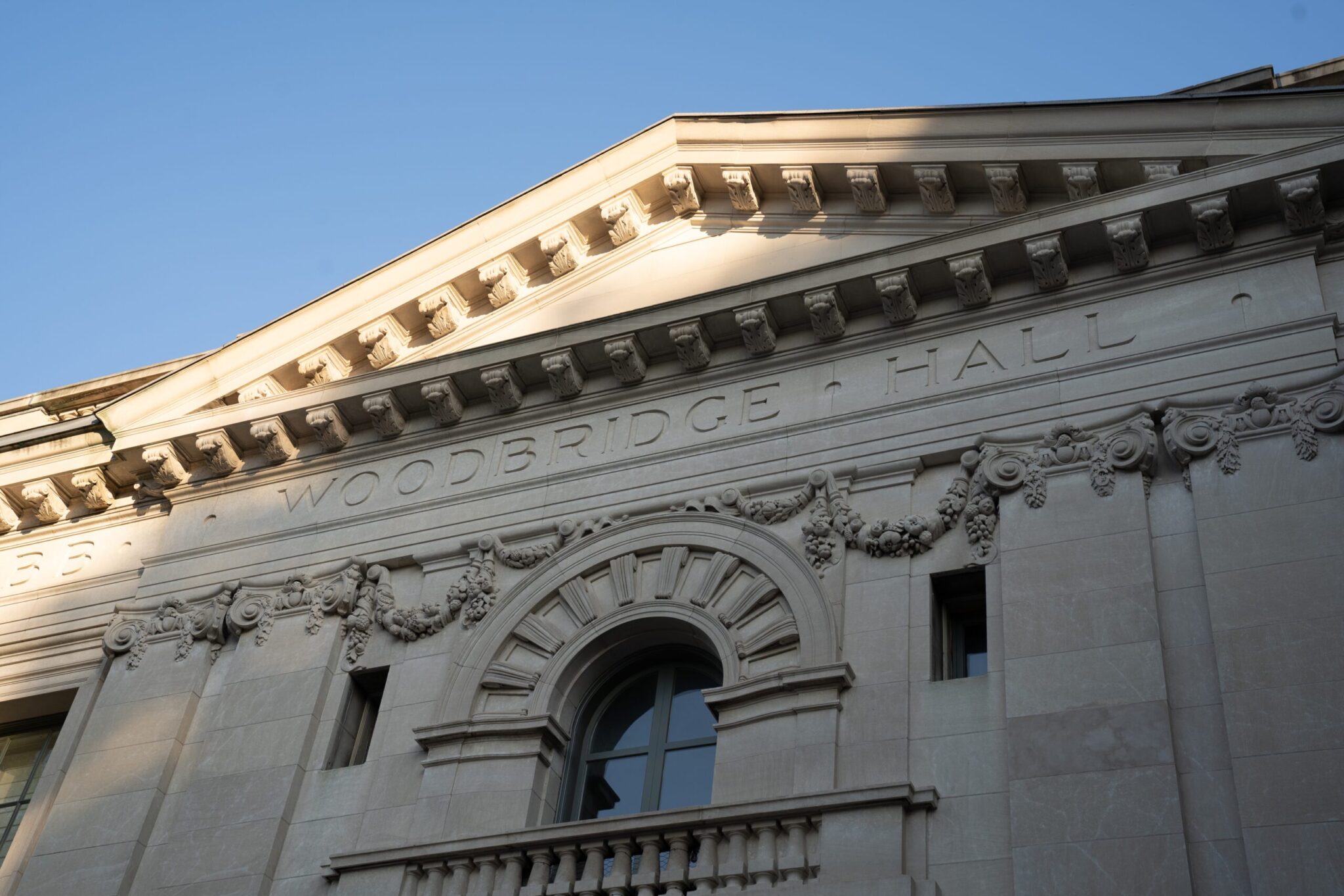Woodbridge Hall: the President’s office?
The Offices of the President and of the Secretary and Vice President for University Life have been situated on the first floor of Sheffield-Sterling-Strathcona Hall since construction at the Schwarzman Center prompted relocation over five years ago.

Ellie Park, Photography Editor
Woodbridge Hall will remain vacant for the foreseeable future, according to University administrators who cited internal accessibility issues for the building’s continued disuse.
The three-story building was constructed for Yale’s bicentennial celebration in 1901 and was intended to house the University’s administration — most recently, the Offices of the President and of the Secretary and Vice President for University Life. It also served as the meeting space for the Yale Corporation, the University’s 16-member board of trustees, which convenes on campus at least five times a year. In August 2018, however — just before major construction began on the Schwarzman Center, directly adjacent to Woodbridge Hall — administrative offices moved to the first floor of Sheffield-Sterling-Strathcona Hall, or SSS.
“I’m going to leave it to the next president to decide if they want to move the Office back to Woodbridge,” University President Peter Salovey told the News. “Woodbridge Hall is a beautiful, historic building, but Woodbridge has a big challenge and that challenge is it’s not an accessible building.”
Senior Vice President for Operations Jack Callahan ’80 told the News that the 2018 relocation was necessitated by the construction of a dining and entertainment space beneath Schwarzman Center, known as The Underground.
Construction for this space was “disruptive,” Callahan said, because it necessitated the disassembly of Beinecke Plaza. He added that the move to SSS was a “pragmatic choice” for the relocation of Yale’s administration because it remained close to the center of campus and required little renovation.
“It was necessary to move all of the occupants of Woodbridge Hall somewhere else,” Callahan said. “It took us a while to land on what was the right place, but we liked SSS because it was still pretty centrally located on campus and didn’t require that much renovation.”
Callahan further added that Woodbridge’s design is not “the most efficient,” citing the need to fit an elevator in such a “confined space” and the inability of hosting modern-day meetings that might necessitate digital presentations in the second-floor room where Yale’s trustees formerly met. He also said that the working space in the basement was apt to get crammed and that “accessibility” across Woodbridge’s three floors was a concern for continued use of the building.
According to Salovey, Woodbridge Hall has three major issues, namely that it remains internally inaccessible, has poor ventilation and has an inefficient layout to adequately incorporate staff who support both the University President and Secretary.
“We’ve looked at various plans for elevators, and it’s turning out to be quite expensive,” Salovey told the News in October. “If the President is going to move back into Woodbridge, [the] building has to be accessible and right now it’s not … we haven’t found the right elevator solution just yet.”
During the construction at Schwarzman, a wheelchair ramp was built at the entrance to Woodbridge Hall.
According to Salovey, though, other issues remain for the building.
“While a wheelchair ramp has been constructed outside the building, once you’re in, if your meeting was on the second floor, you can’t get up there, and it’s a pretty long climb up a big flight of stairs, kind of a double flight of stairs,” Salovey said.
Prior to this move, the University President had never resided outside of the building for longer than a year since its construction.
In 2004, former University President Richard Levin made the move to Betts House — a Yale-owned mansion at the top of Science Hill — for under a year due to renovations on Woodbridge Hall. Levin wrote to the News that his administration moved back to Beinecke Plaza once renovations were completed, but that he maintained his space in Betts House.
“I kept an office in Betts House as a getaway, when I needed quiet work time,” Levin wrote. “But all my meetings and appointments were at Woodbridge Hall.”
Both Salovey and Callahan noted the historical significance of Woodbridge Hall, where Yale’s administration has resided for much of the 20th and early 21st century. Before 1901, the Office of the President was located in the Treasury Building, demolished the same year Woodbridge Hall was erected.
However, it remains unclear whether Woodbridge Hall will ever again house the University’s top administrators. Callahan suspects that, in the short-term, Woodbridge Hall will be used as “swing space” to again house the President’s Office when necessary renovations are made to SSS.
Callahan added that it is possible that the space Salovey currently occupies will be turned into classroom space as part of the University’s plan to renovate lower Hillhouse Avenue, but that the next president will have a hand in what ultimately pans out in the long term.
“Obviously, we don’t like to have beautiful spaces, even if they’re in need of some renovation, lay fallow for very long,” Salovey said. “With the completion of [Schwarzman], we now are free to use it, we just have to make it usable and renovate it for whatever the future purpose of it is.”
Woodbridge Hall is located at 1 Prospect St., in a corner overlooking Beinecke Plaza.







